There are several ways to grow wild herbs given the large quantities and varieties present on our planet.So much depends on the characteristics of the ground, combined with the species of herbs that we want to grow in our garden, or in our pots.
However, in this article we will address the pot cultivation in six steps,in order to make cultivation possible for everyone in the apartment, on your own balcony, or in a small garden,all places where space is limited and must be managed efficiently.
Table of Contents
THE CULTIVATION PROCESSES IN BRIEF
In order to grow in pots, there are some important precautions to be taken into account.First of all, it is important to understand what kind of seedlings we want to grow, thus identifying their salient characteristics.
The origin, consistency, permeability and many other elements they are of utmost importance when, instead, the land we are going to use is taken into consideration.

Another essential point for growing in pots are the tools you should have in order to better manage the processes,easy to apply, but extremely critical for herb growth.
It is thanks to these and other measures, which will be analyzed in detail in the next paragraphs, that we can successfully cultivate all types of herbs on our balconies, or gardens.
It is also good to keep in mind that the time of the season is of vital importance,if we intend to achieve great results in our small crops.
BUT HOW do you GROW IN A POT? HOW DO YOU GET A GOOD HARVEST?
It is necessary first of all to start from the preparation of tools useful for this kind of cultivation, limited in space, but extremely effective if carried out with all the care and following the next steps.
Depending on the kind of plants we are going to plant, it is crucial to understand that each one of these needs certain treatments.
Some in fact will be more fragile than others, especially in the first stage of development, just after germination. Nevertheless, spontaneous plants are generally more resistant than those selected by man for traditional crops.
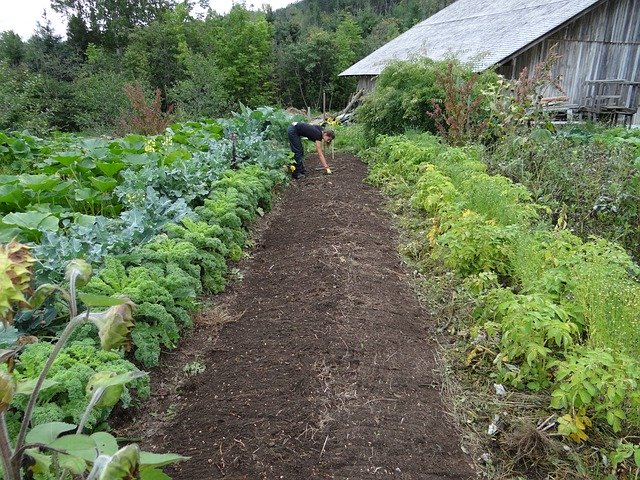
It is a feature like this that makes them easier to grow, in addition to the fact that they are less subjected to stressand they are less demanding in terms of soil, nutrients and light.
For the same reason, adopting a totally natural fertilization system such as the compost,we can make them thrive even more effectively.
THE NECESSARY EQUIPMENT
In order to start, we need to get the following items:
- expanded clay;
- a clay, plastic, or seedbed pot;
- a sheet of plastic, or a small sheet of glass;
- some soil for the vegetable garden;
- compost;
- seeds;
- garden watering can (universal);
- gardening gloves and shovel;
THE EXPANDED CLAY AND THE CLAY POT
Thanks to the expanded clay, which must be arranged at the bottom of the vase,we can avoid the water stagnation that can damage the plant,or at least slow down its growth considerably.
This should be used above all with plants that cannot stand humidity, in fact for the latter the use of a clay pot,able to, ensure the evaporation from the surface of the container itself.
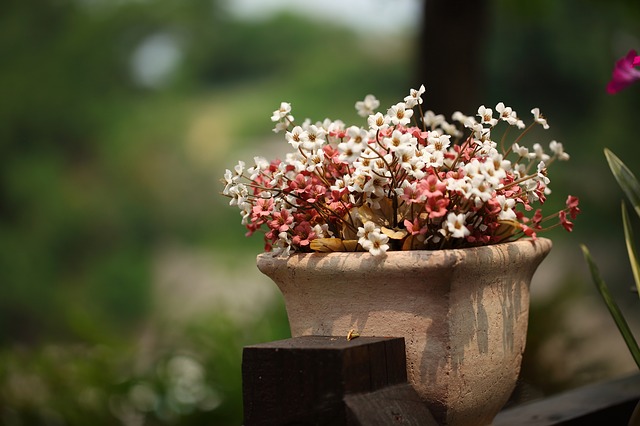
For the record, to define ourselves as green-fingered gardeners, it is not enough to drown the plants as many of us did in their first experiences in the vegetable garden!
VASE AND PLASTIC sheet
The plastic pot instead is recommended for all those plants that need a lot of humidity.In fact, it is more difficult for this to make the ground breathe as much as the clay pot.
In case the shoots grow with difficulty, it is useful to have a small transparent plastic sheet to be placed on top of the vase that we have previously prepared.
THE SEED BED AND THE GLASS PLATE
In case we had planted our seeds in a seedbed with divided cells,just cover it with a glass plate a few centimeters above the cells.
The seedbed is a very useful system, to use when the seeds are very small and requiring more care.It will then be imperative to transplant them in pots, after having favored their germination.
SOIL FOR GARDENS (UNIVERSAL)
Another important element is the soil for gardens (universal),tendentially of wooded or rural origin, and suitable for different types of plants. It can be purchased directly online on dedicated channels, or in any well-stocked nursery.
However, it is possible to do it by hand,adding the compost to other earth and calibrating the quantities of elements contained in the earth, according to the needs of the plant that will grow.
The compost
Then we have compost, an essential element for natural cultivation. We can create it at home,using different techniques, although personally I prefer the composting directly in pots..
Since the compost is a product of organic origin, which involves the decomposition of many elements, will always tend to generate unpleasant odors, especially if kept in special ventilated containers, as is often indicated.
However, by adopting the pot composting system, odor problem can be avoided,especially for those who live in an apartment. The compost is thus compressed between two layers of earth, which allow the transpiration of the substance that will be created, excluding bad smells.
THE SEEDS
The seeds are easy to get, can be found directly in plant nurseries,or, if necessary, they can be recovered from plants already present in the pots (if you have already tried your hand at the art of the grower).
Not all the seeds we want, however, can be found in plant nurseries. For this reason sometimes, it is good to know how to autonomously collect the seeds and keeping them for the following year. To find out more about this topic, I refer you to my article on: wild herbs.
In this way you also avoid spending considerable sums to buy the plants already born, the price of which varies depending on the species that we want to cultivate and that is often not very convenient.
WATERING CAN FOR GARDEN
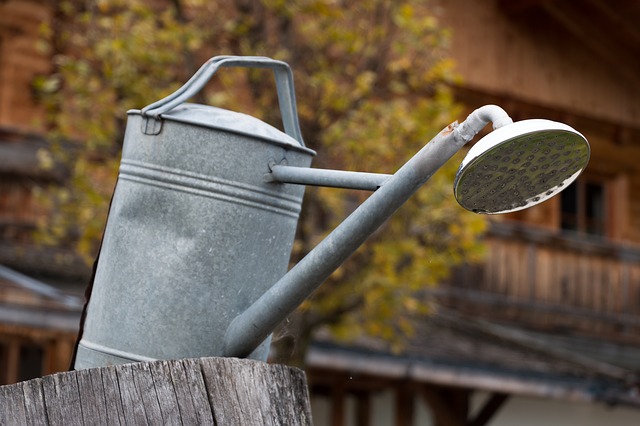
As trivial as it may seem, it is also useful to spend a few words on the watering can. It is in fact very important to choose one capable of mitigating the jet of water.
Often, due to an excessive jet, or due to the falling of excessively large drops, the seeds can be thrown out of the pot,or you risk dropping an excessive amount of water, capable of ruining all the preparation made so far.
To take care of these operations you will no doubt need gloves and shovel,in order to avoid getting dirty with the elements that will then form the compost, or by handling the earth.
HOW TO PREPARE THE POT AND SOW
Preparing the pot and planting includes six very simple steps.However, I recommend that you wear a pair of latex gloves, so as not to get dirty while preparing the potted compost.
It is therefore important to prepare the jar you intend to use (plastic, clay, or terracotta)the soil, the expanded clay as a result of the plants you want to plant and their needs, the seeds (if they need to be prepared).
The steps, as I said, are the following 6:
- Prepare the ground base;
- Prepare the compost in the pot;
- Cover the compost with a layer of earth of at least 5-7 cm;
- Sow;
- Cover the seeds with a thin layer of earth;
- Water;
Step 1 - Prepare the ground base
Prepare the ground base with the suitable soil,and if necessary, add expanded clay according to the needs of the plant that will grow there.
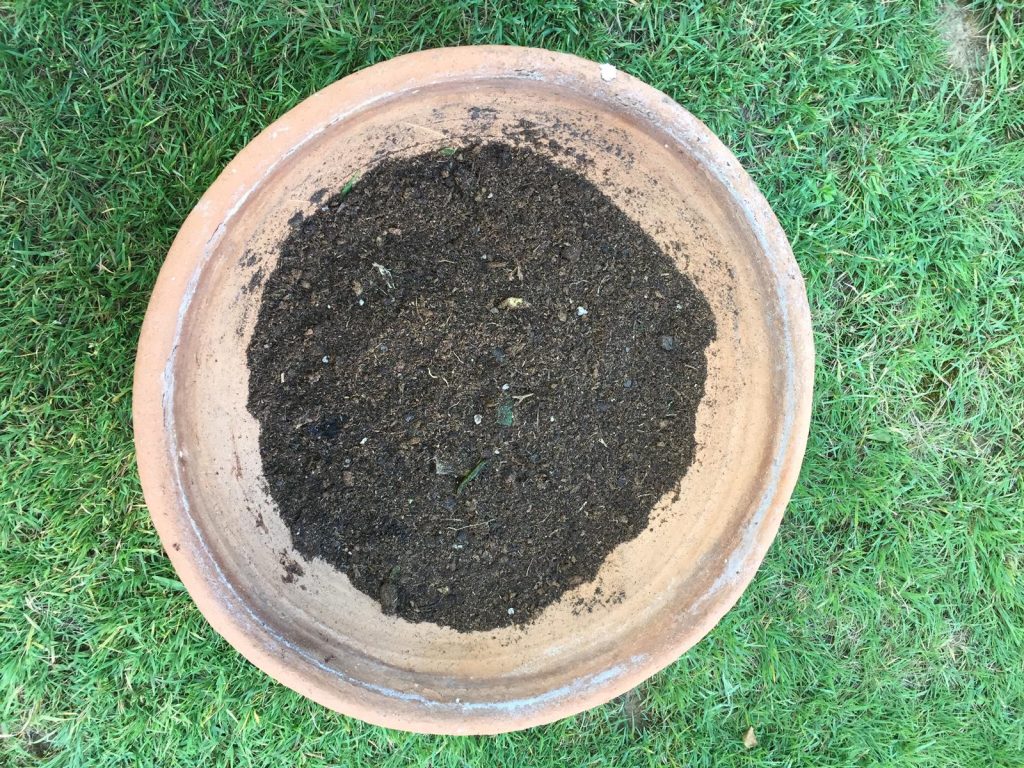
STEP 2 - PREPARATION OF THE COMPOST IN THE POT
Here you will need to use the organic waste you have at home,which can be of various types. For example, you can use green waste like other uprooted weeds, fallen leaves, old flowers etc.
Or again, chopped pieces of napkin, pieces of fruit, discarded vegetables, egg shells and so on. The important thing will be to crush these organic waste with a pair of scissors,to favor its decomposition.
Finally, the ideal would be to keep the vase in places that are not too cold,so that decomposition takes place more quickly. Nevertheless, I can assure you that it will take at least three weeks for the organic remains to start becoming compost.
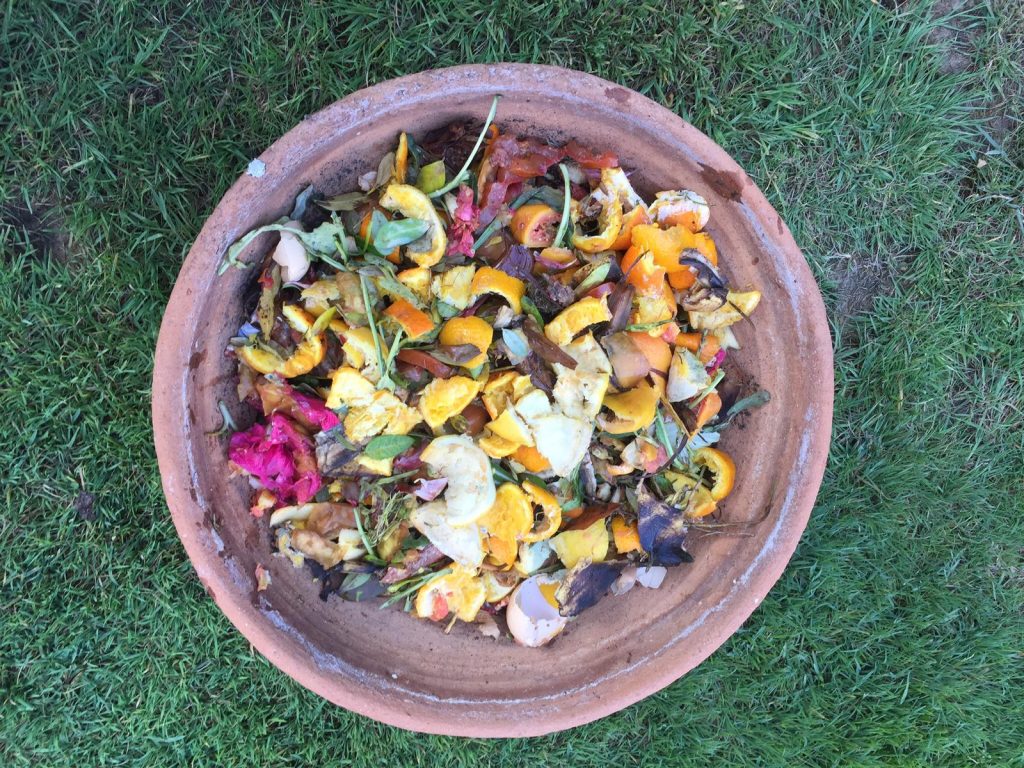
STEP 3 - COVER THE ORGANIC REMAINS
Just use the same soil mix prepared earlier, to cover the organic material, with one soil layer of at least 5-7 cm.This will allow you to avoid the strong odors that the compost can generate.
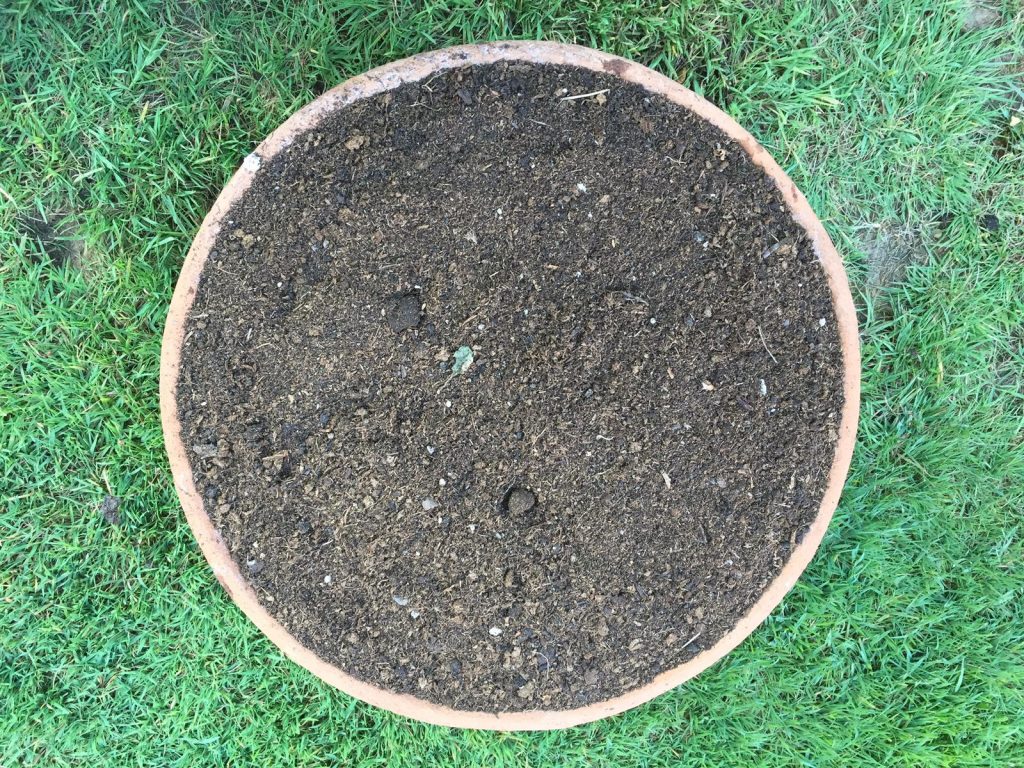
STEP 4 - SOWING
Sowing is very simple, but it will also be useful in such circumstances to pay attention to the characteristics of the plants that will grow,which may require a more or less greater distance between the seeds than others.
If you already have seeds, it will be enough to spread them on the surface of the soil.In case you need to prepare them, it will be sufficient to separate them from the plant in the ways indicated for that type, and replicate the process just explained.
Below is an example of how to get seeds from a chili:
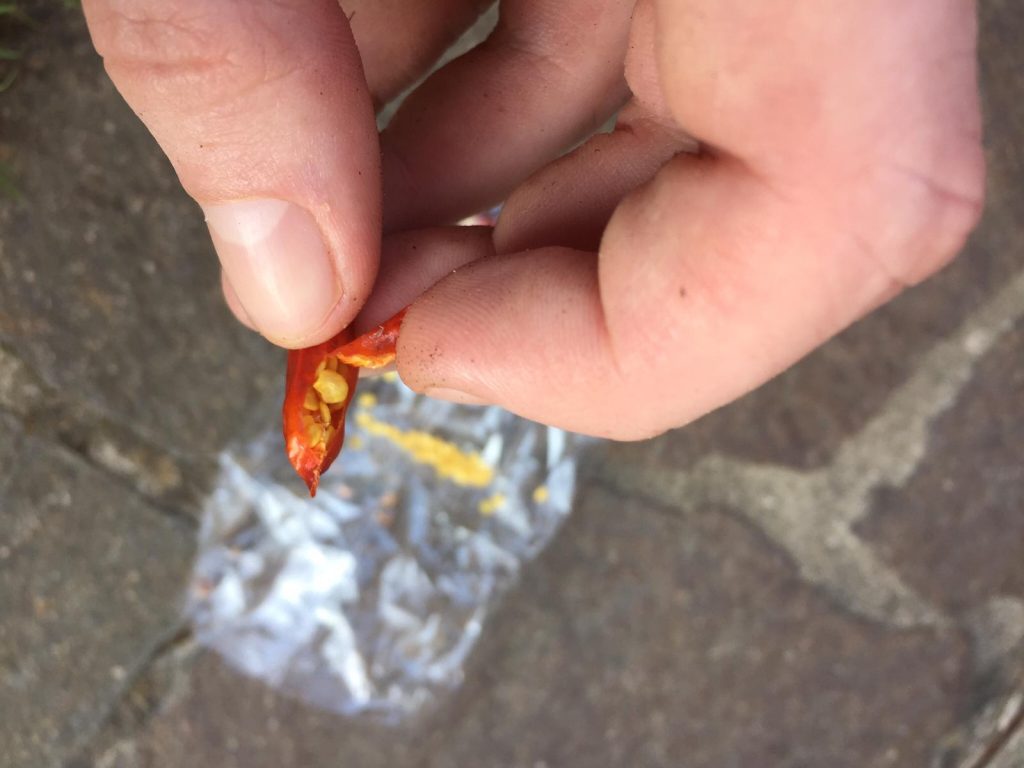
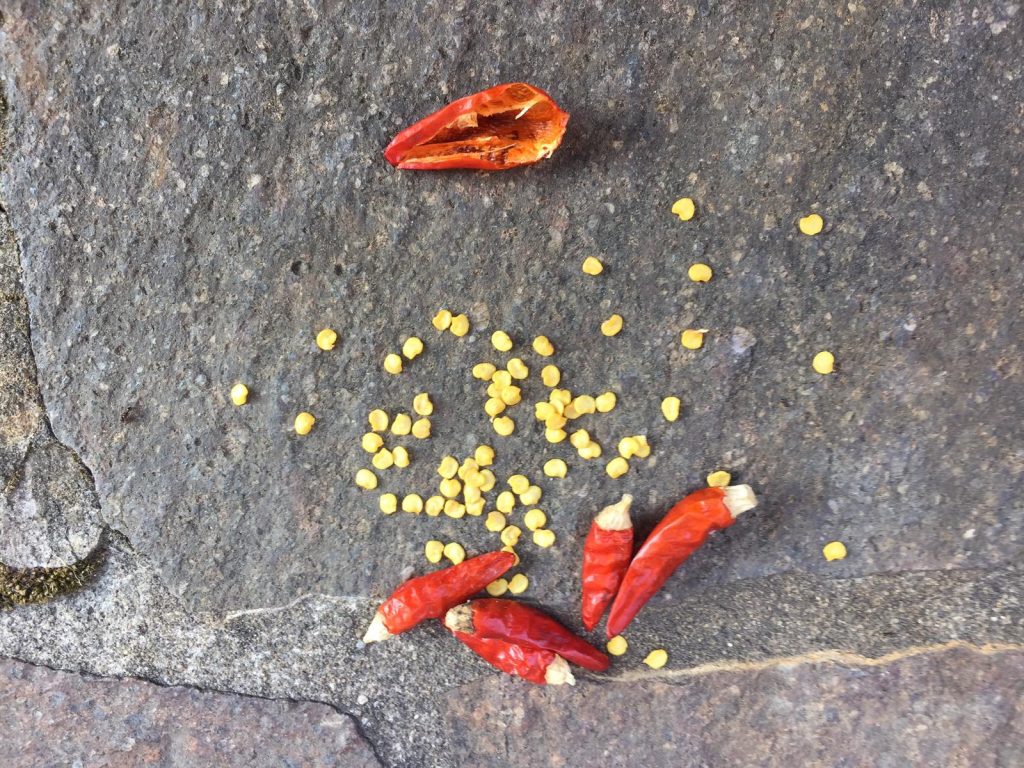
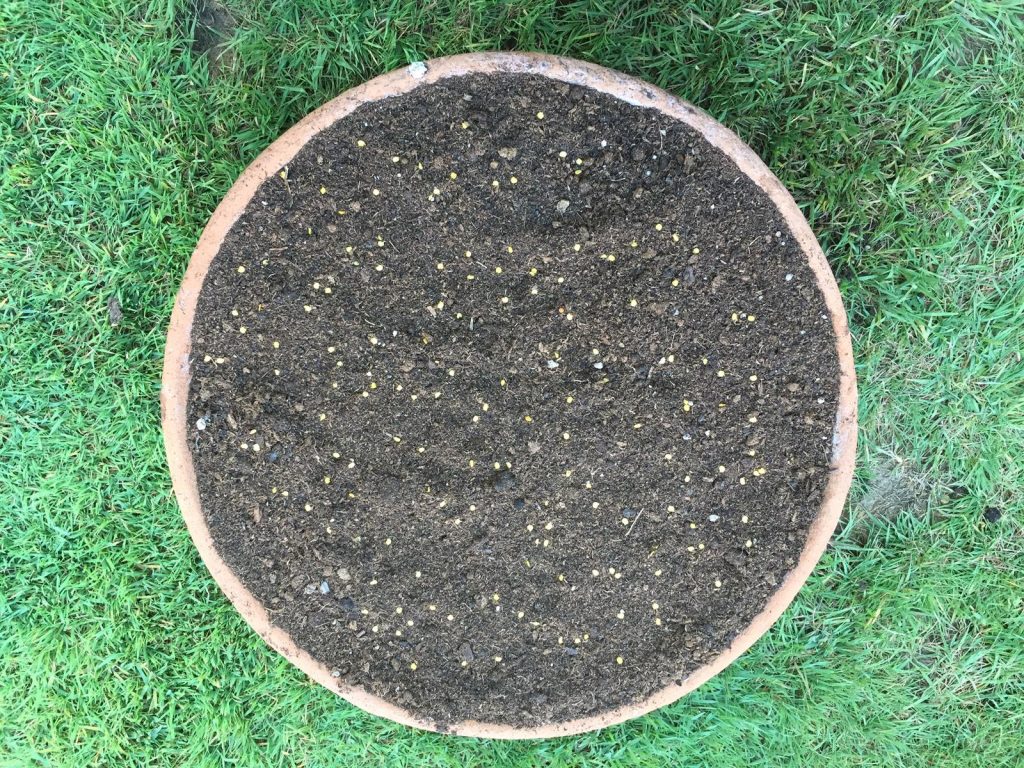
STEP 5 - COVER THE SEEDS WITH a thin layer of EARTH
They will be enough a few millimeters of earth to cover the seedsin such a way as not to tire the birth of the plant too much.
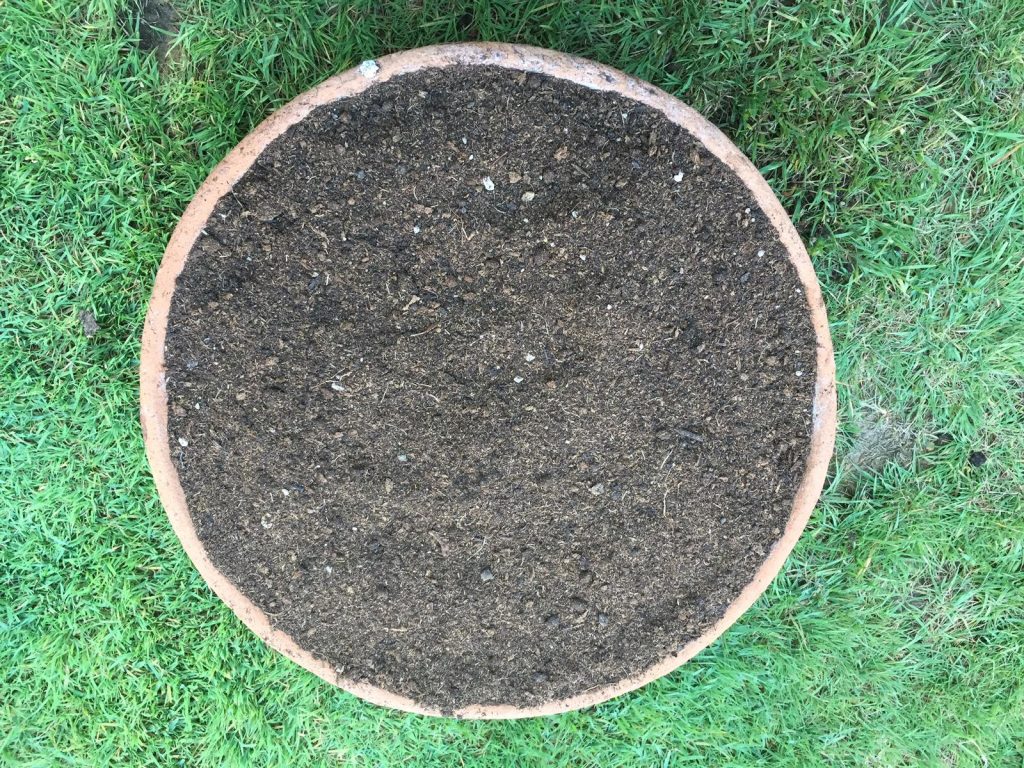
STEP 6 - WATER
Now, paying close attention, gently water the surface,in order to avoid ruining the work done up to this point, thus risking to uncover the seeds.
If you are now wondering which herbs to start with, Below you will find a list of what for me are the best and easiest herbs to grow in pots,on the balcony of our house.
8 HERBS TO GROW IN OUR POTS
There are amazing quantities and varieties of herbs in the world, especially here in Italy, a country that,thanks to its climatic qualities and the variety of microclimates existing throughout the country, favors the growth of these everywhere..
However, we are mainly interested in those intended for cultivation in pots,and of these we will see only a few, just to give you an idea of what to ask for at the plant nursery and what you might like best.
These are the more common plants and therefore more easily availablethanks also to their characteristics, flavor and medicinal qualities.
Some of these may seem obvious, but their wild nature makes them even more tasty and useful from a medical point of view, I highly recommend them:
- borage;
- carrot;
- chervil;
- chives;
- mauve;
- plantain;
- purslane;
- thyme;
Before starting the brief description of each of these, it should be noted that, if you want to plant different species together, it is important to verify that these can help each other growing,and don't limit each other.
Borage
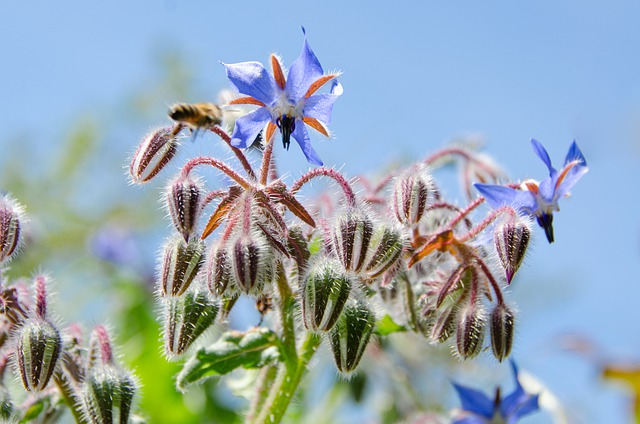
Borage has an intense taste and its flowers at the time of flowering are bright blue,So beautiful that it can be flaunted as an ornamental plant.
The oil produced from its seeds can cure some skin diseases such as erythema and dermatitis.In addition, the juice of the fresh leaves is a good tonic and detoxifier.
The management is not difficult, and if sown respecting its timing, it proliferates autonomously and quickly. In about 8 weeks the leaves can already be harvested.It also needs a lot of light and requires draining, sandy soil.
To make it grow in pots, it is good to add expanded clay to the soil to create the draining conditions mentioned above. We also recommend a large vase,as for the seedlings, it takes a lot of space to develop.
Finally, the most suitable period for the harvest goes from June to October.Just pick it up by hand, to be consumed the same day. In fact, keeping borage is not easy,for this you must pay attention to ventilation and temperature once it has dried.
THE WILD CARROT
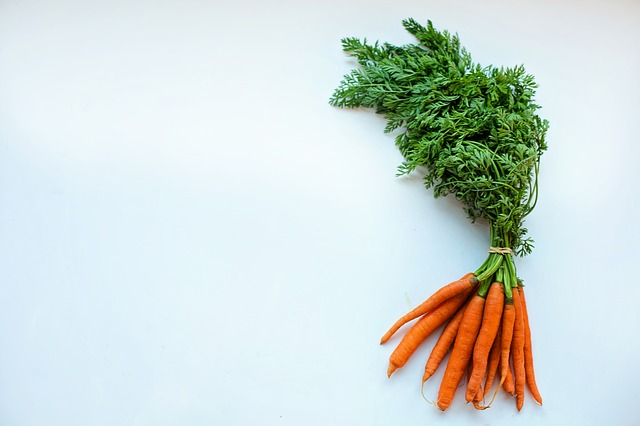
Wild carrot is very similar to that found at the gardener,however, it differs in qualities and strength. In fact, this can also grow on arid and not very fertile soils.
It can be found in uncultivated or arid meadows and even along the edges of roads. La growth takes place in two years,in the first year it develops the root and in the second one it prepares for reproduction and then for flowering, reaching one meter in height.
It should be sown between January and March,in a soil that must be clayey and heavy, avoiding stagnation of water and guaranteeing plenty of light.In a pot about 30cm in diameter, a maximum of 5-6 seeds should be planted.
Seeds can be harvested from July onwards,or they can alternatively be requested at the plant nursery. Stems and leaves are harvested until flowering, while the roots are harvested towards the end of summer,when the concentration of nutrients in them is at its peak.
THE chervil
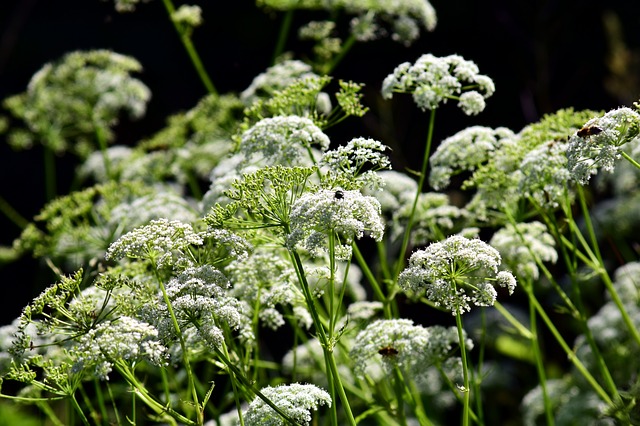
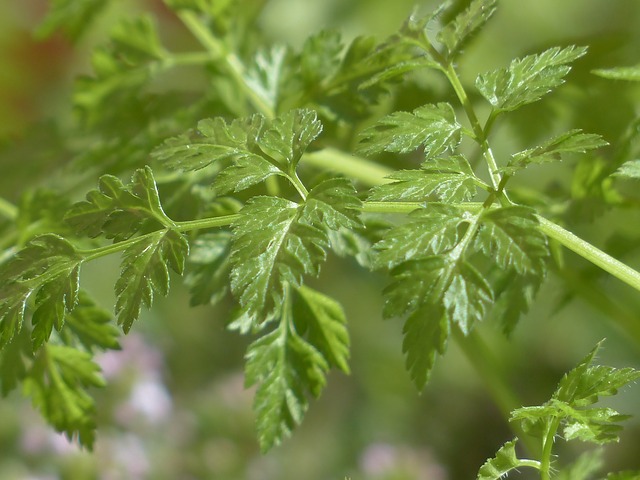
The chervil is a very frequent plant,and its flavor is similar to that of parsley. Unlike the latter, in the kitchen lends itself best to very refined recipes with its refined taste, which refers to anise, licorice, ginger and parsley.
It is a plant that it requires a lot of nitrogen,for which the support of organic fertilizer, as well as of the compost, it is imperative for its growth.It also needs highly draining and sandy soil.
Its life span is two years,and its flowers can be seen in the summer of the second year. However, sowing takes place in spring as in autumn,preferably in a seedbed, when transplanting, it is a good idea to keep a distance of 25-30cm between one plant and another.
They don't need a lot of light and they can even be grown indoors. Finally, the leaves can already be harvested from the sixth week. To understand when the leaves can be harvested, the chervil sends us a extremely eloquent signal..
In fact, it produces red specks in the branches,and these indicate the maximum harvesting limit, beyond which the leaves lose part of their properties and therefore their taste.
The chives
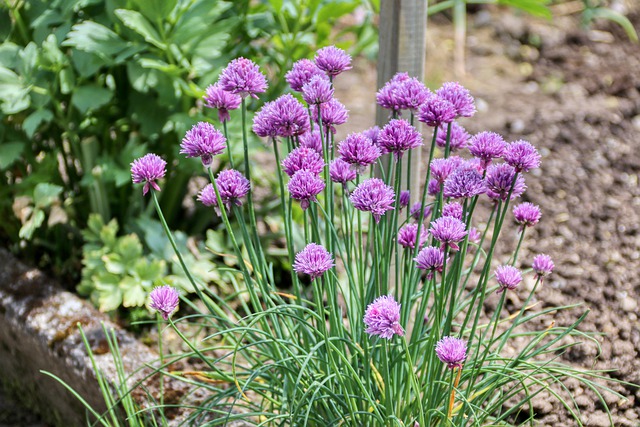
This too is a herb very frequent in nature, with delicate and unobtrusive tastes.It goes well with any dish, and leaves that onion aftertaste, which in any case does not affect our breath in any way, in the event that after a quick lunch dedicated to taste, we have to go back to work.
The seedling consists of a root bulb divided into smaller ones,from which then extend some hollow twigs,that remind of the needle-like leaves of mountain pines.
The flowers are pale lilac, however, it is better to remove them in order to favor their growth and have longer leaves,which can reach up to 50cm in length.
It has no special needs, in fact it does not suffer if left under the sun, nor if placed in partial shade. This is a perennial plant,from whose bulbs, every year, after the winter, the needle-like leaves grow back.
In pot it is good to sow a maximum of six seeds,and to keep them at a minimum distance of 20cm to favor their expansion. Finally it does not need a particular terrain as it is very adaptable, and to collect it, just cut the leaves at a distance of about 3-4cm from the base..
The mauve
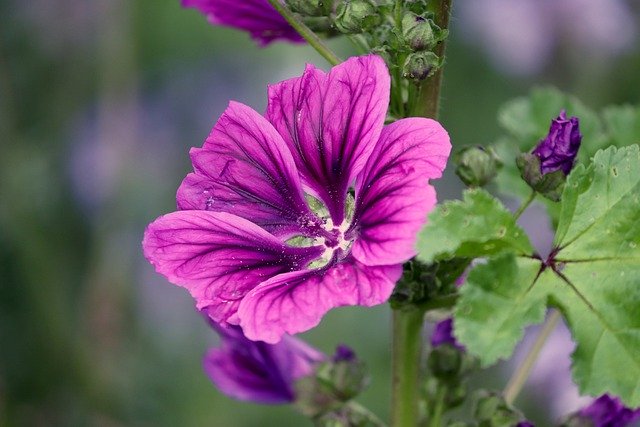
The mauve is a very strong and adaptable plant.It contains many properties, which make it excellent both in the culinary and medicinal fields. For this reason, in fact, it occupies many spaces in herbalist shops.
It is rich in vitamins A, B, C and E.Very useful as draining, purifying and refreshing remedy.Used by myself many times, after rather trying days under the sun!
Being adaptable, it does not require particular characteristics in the ground, even though the richness of nitrogen greatly favors its growth,for this reason it is always good to accompany it with compost, or manure.
It doesn't require much sun,and for this reason in fact, it is advised to grow it in pots of about 25-30cm in diameter, on balconies, or at home.
At the harvest, the entire mauve is used, even the flowers,and for these it usually takes place in the summer period, after flowering.
Plantain
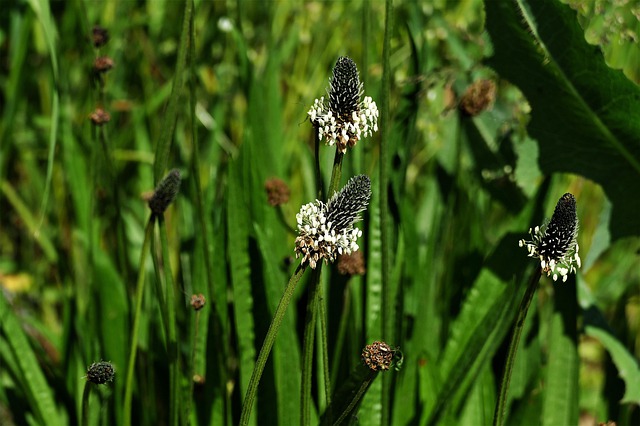
The plantain too is a plant with many properties,usable both as a cooked vegetable, in the salad and as a remedy to calm bronchitis, sore throat, and cough, thanks to the strong presence of vitamins A and C..
It has few needs and for this it is very easy to grow even in pots or in the garden.It can be sown without respecting any specific order, or it can be grown in a seedbed, and then transplanted into a pot.
It needs light, but not for too long periods.So you need to put it in a place where at a certain point the sun's rays are no longer able to reach it directly. By watering it frequently the plantain will be able to grow quickly.
The harvest must be done without pulling out the roots,from them many leaves will still grow, which incidentally, they must be collected when they have not yet reached maturity,because they are tastier.
Finally, in order to make the most of the leaves for cooking, it would be better if these were harvested between April and June,when the flowers appear. After flowering, the seeds can be collected in order to preserve them.
Purslane
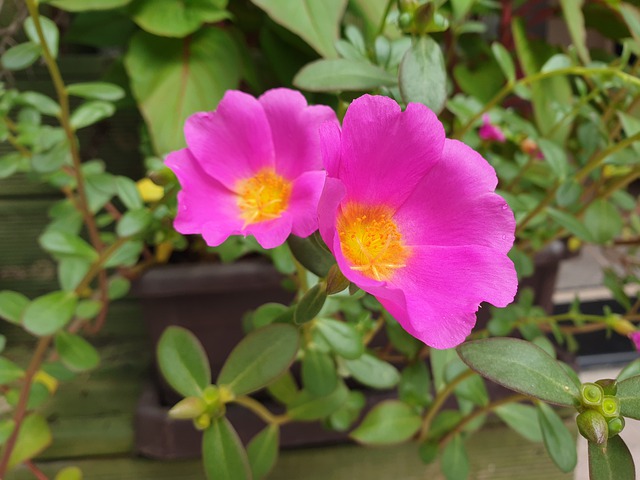
I think purslane is indeed the perfect plant for anyone wanting to experience her growing skills for the first time.This is in fact an ultra resistant plant, capable of surviving for a long time even in the absence of water and adaptable to any type of terrain,it even resists on asphalt!
At the same time it is rich in minerals, vitamins and omega-3s.The latter are very important fatty acids for humans and are present in active form in purslane.
Perfect for growing it in pots,you only have to uproot some plants in nature and plant them in a pot on our balcony, then letting them proliferate autonomously.
It needs a lot of light, and does not suffer from a lack of water.However, by watering it constantly, it will be able to offer thick and substantial leaves. The collection is very simple, you just have to cut the leaves near the root,so as to favor its regeneration.
Thyme
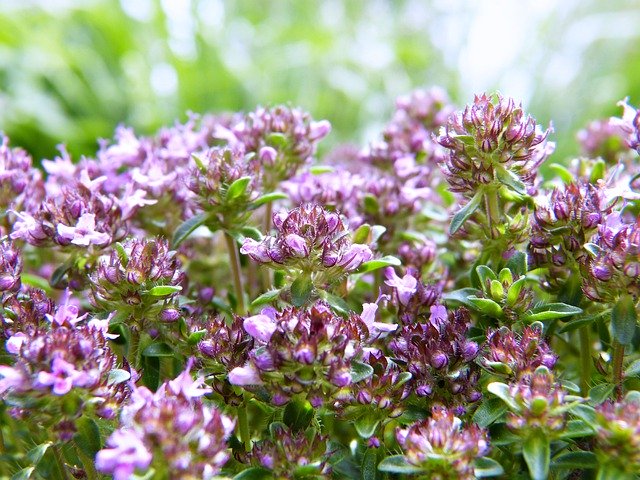
And finally we have the thyme, perennial aromatic plant with an unmistakable scent,also present in the not too busy seaside areas of the Mediterranean.
The wild version has smaller leaves and does not exceed 20cm in the maturity stage. During his life, the stem takes on a woody aspect and presents groups of leaves, very beautiful in bloom.
To cultivate it in vase it is good to make it grow in the seedbed first,so then you can easily transfer it to a vase. This will have preferably to be 30cm in diameter and in terracotta,to be filled with universal soil.
The harvest, to make the most of its aromatic properties, should be done between May and June,and then again in September. After flowering, it is good to cut it almost to the ground,in order to favor its regrowth later.

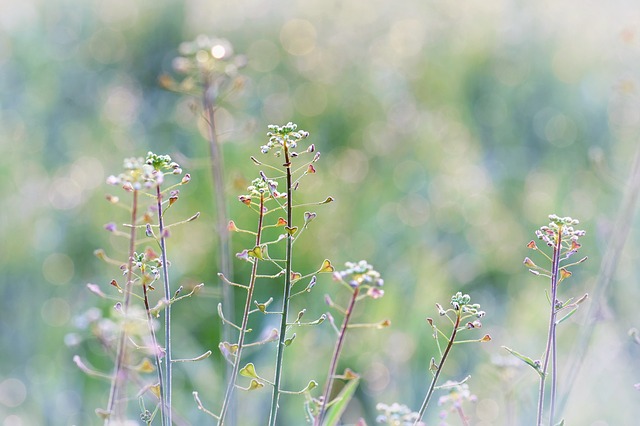

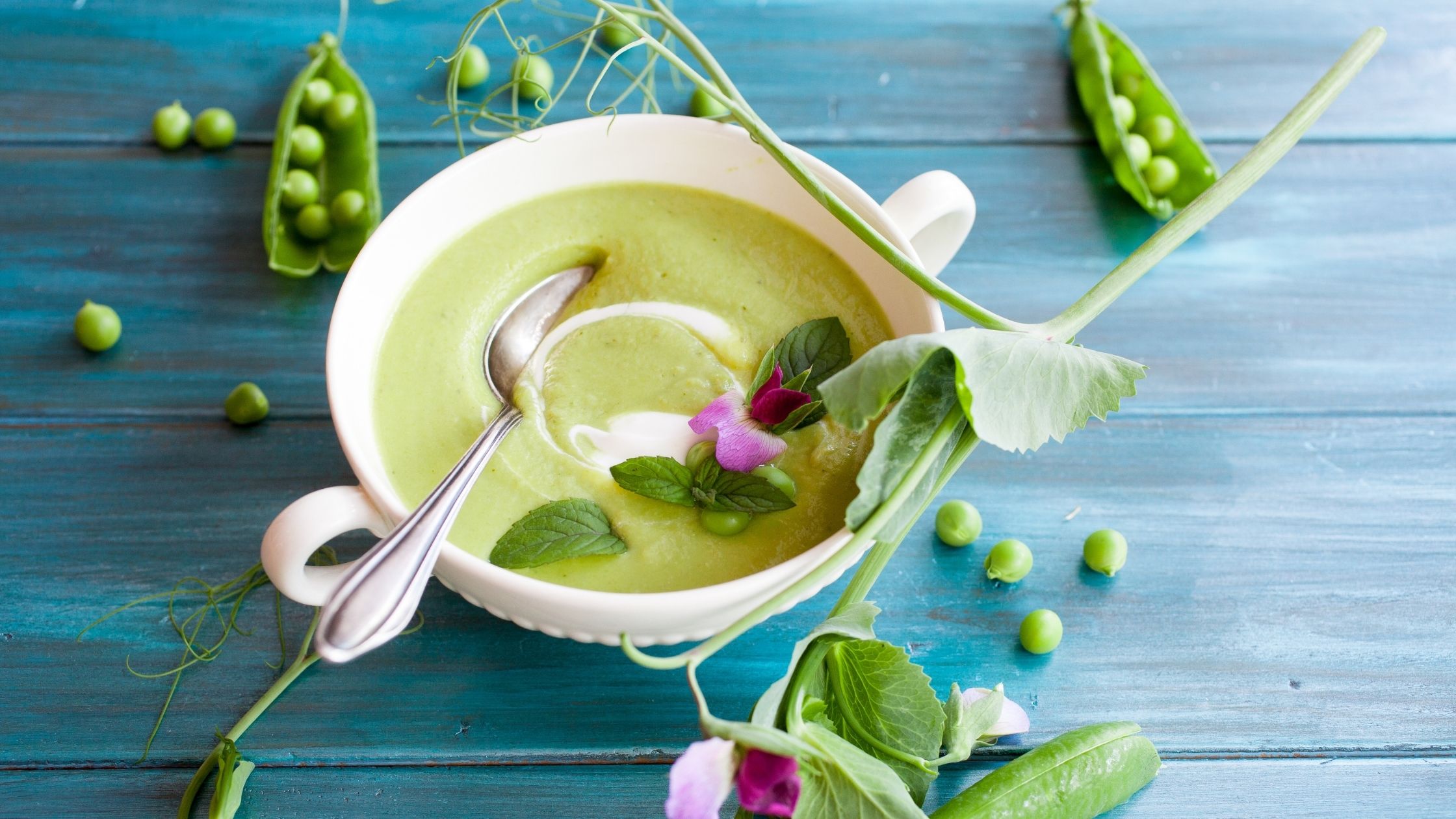
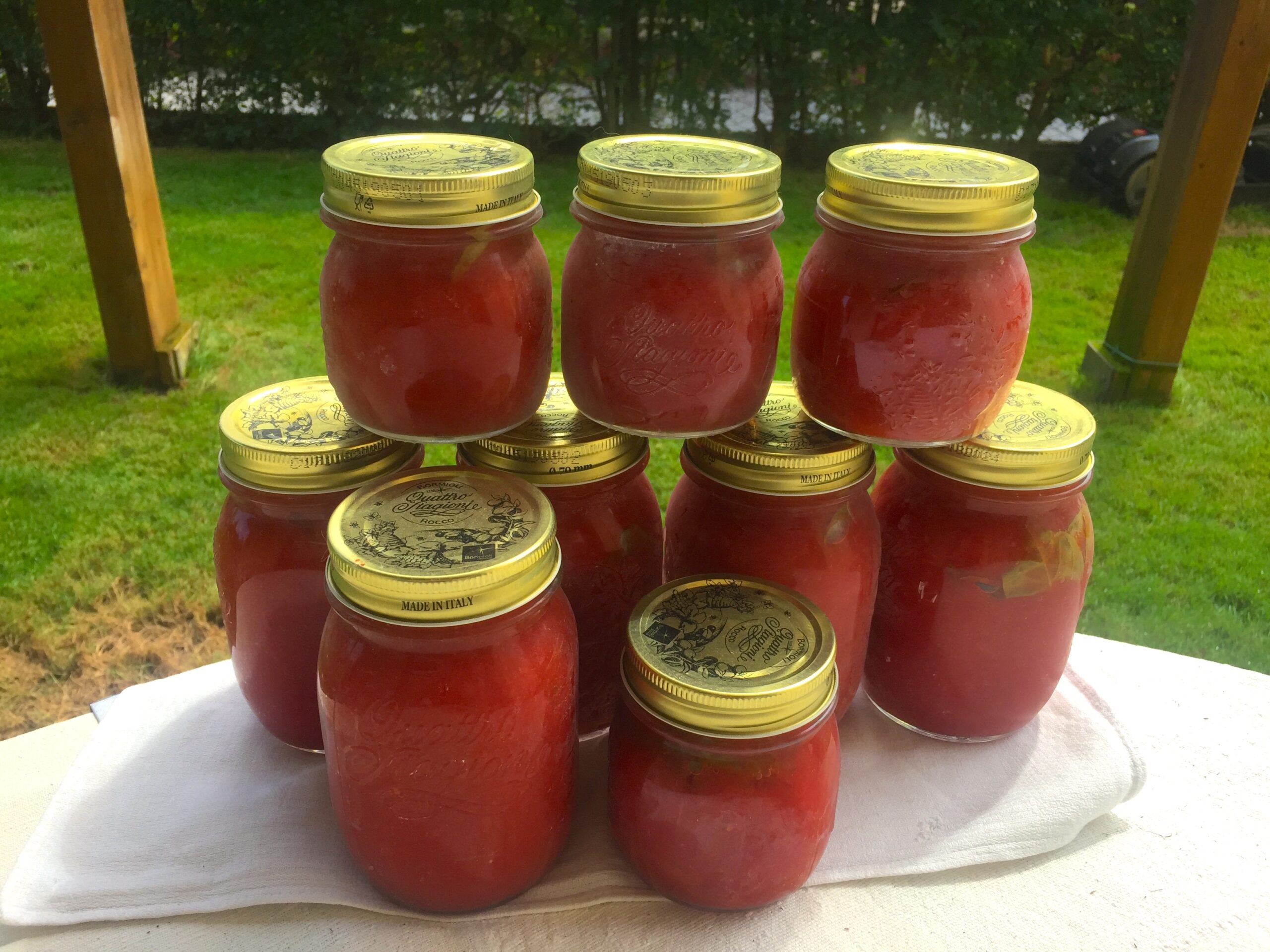
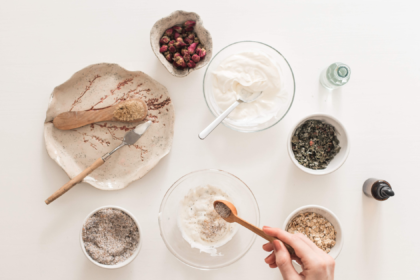
hey, DON
I read this article. you write such an informational artical.
but don, I notice you didn’t explain how to prepare a seedbed for herbs. just i notice that part.
my suggestion is to write a particular article about herbs seedbed. that’s it and overall this article is very good and informative.
thanks!
pijus
Hi Pijus!
I really appreciate your comment and suggestion, I will definitely write an article about herbs seebed.
We can mention each other in our articles in the future if you want as external links.
Just let me know!
Thanks,
DonAlbe
wow,????
that sounds goods!
let’s do it.
you can mail me at smartlivingideaoutlook@gmail.com
thanks!
pijus